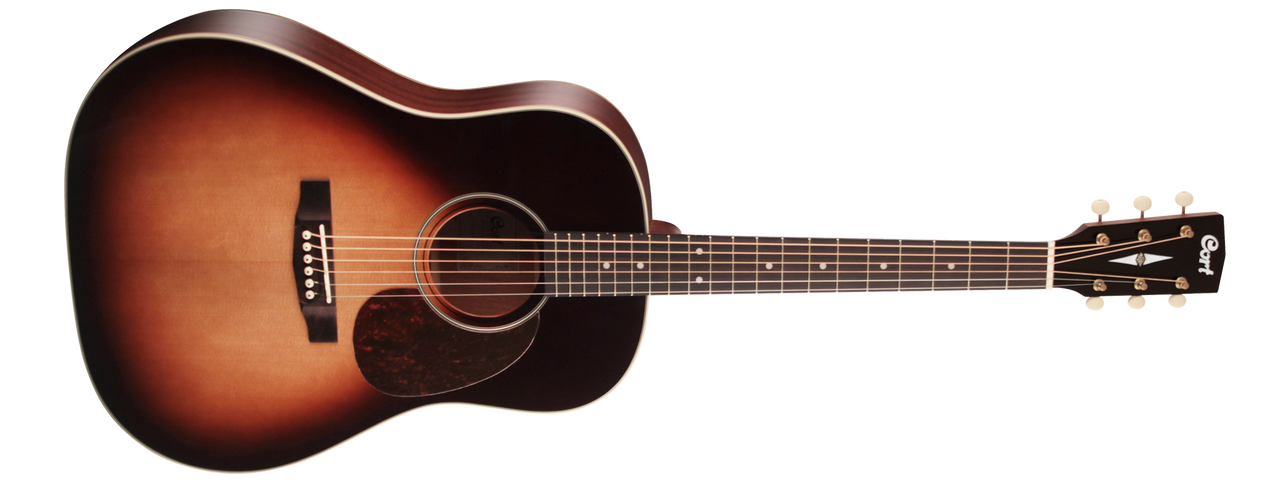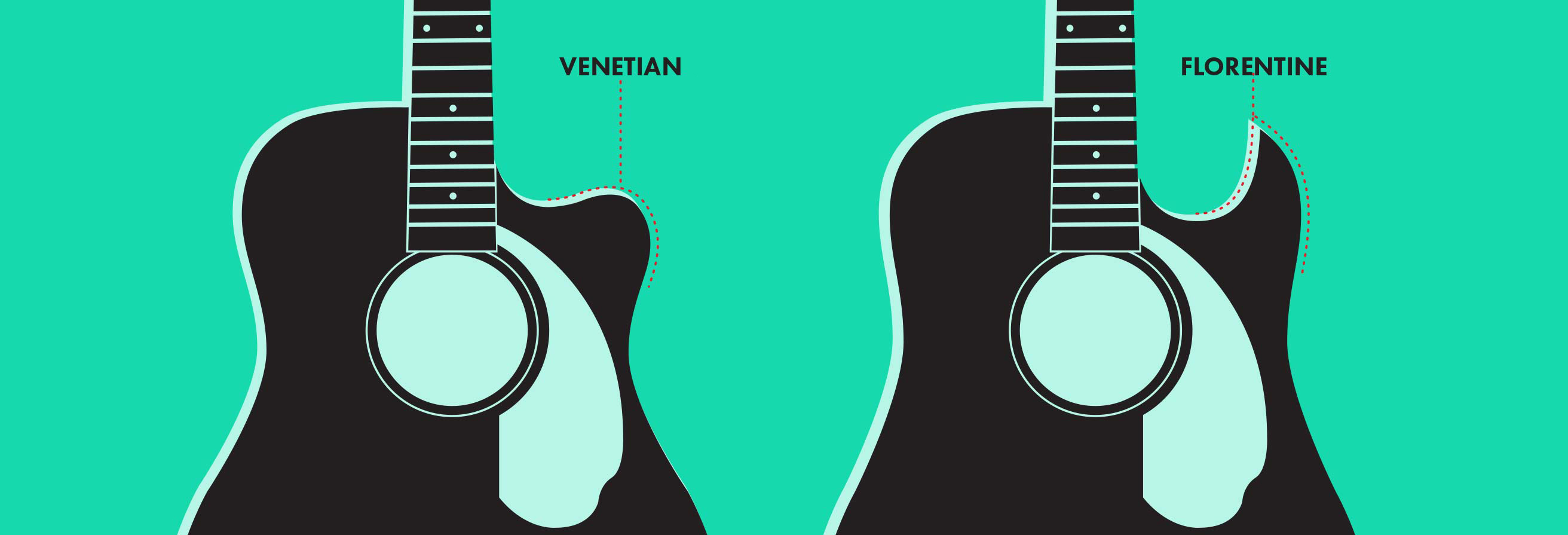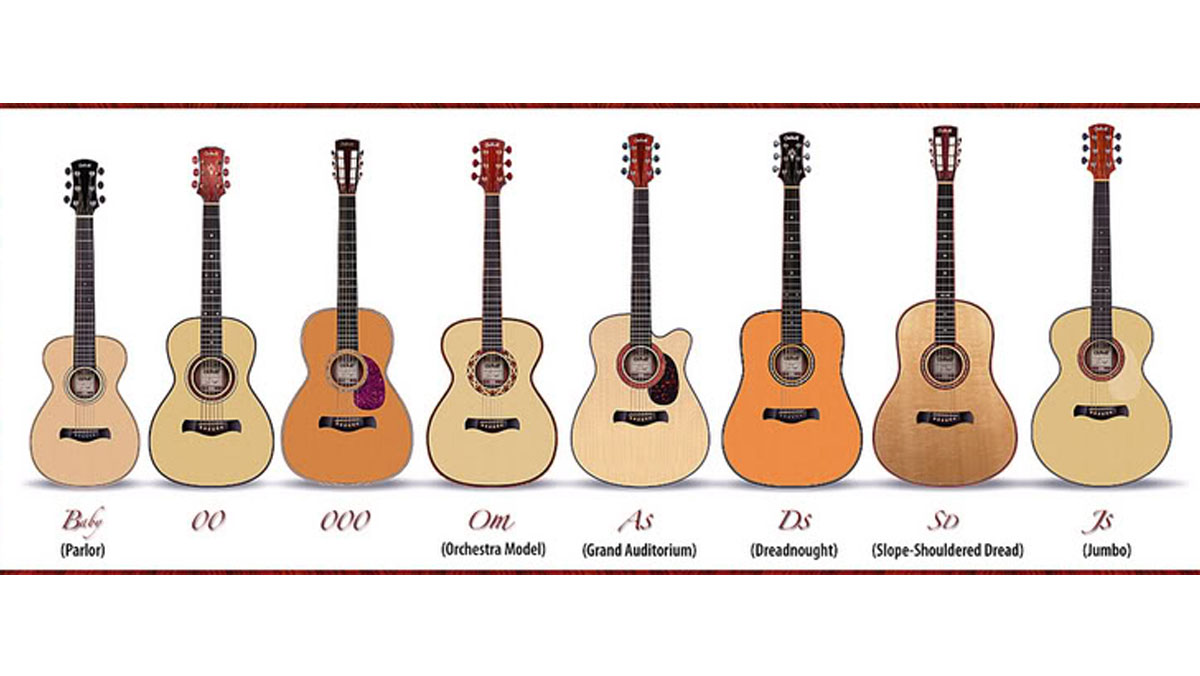Understanding the Differences: Dreadnought vs Cutaway Guitars
The quest for the perfect guitar often boils down to a choice between two popular body styles: the robust dreadnought and the versatile cutaway. The dreadnought, with its larger body and deep soundbox, offers a powerful, resonant bass that's ideal for rhythm and blues, country, and other genres where a full, rich sound is desired. Its size and shape contribute to a volume and projection that have made it a staple in acoustic performances.
On the other hand, the cutaway guitar, with its distinctive notch near the neck, is designed for easier access to the higher frets. This feature is particularly beneficial for styles involving lead playing and intricate fingerwork, as seen in jazz or classical music. The cutaway may slightly compromise on volume but offers a clearer, more articulate sound. This makes it a preferred choice for players looking to perform complex solos or who value nuance over raw power.
Both guitar types have shaped the landscape of music in their own ways, and the choice between them is often a reflection of the musician's style, genre, and personal preference. By understanding the fundamental differences in their design and sound, guitarists can make a more informed decision that aligns with their artistic vision and technical demands.

What is a Dreadnought Guitar?
History and Origin of the Dreadnought
The dreadnought guitar, a term originally associated with a class of powerful battleships, was crafted by C.F. Martin & Company in 1916. This design was first created for the Oliver Ditson Company but did not gain immediate popularity, leading to its temporary discontinuation. However, Martin reintroduced the dreadnought under its own brand in 1931 with the models D-1 and D-2, constructed from mahogany and rosewood respectively. The instrument's large body and squared shoulders allowed for a louder, bolder tone, contributing to its burgeoning popularity in American folk and bluegrass music from the mid-20th century onwards. Notably, the dreadnought's design became the quintessential blueprint for bluegrass musicians, valued for its robust sound that complemented vocal harmonies and cut through the mix of other instruments. As the dreadnought's fame soared, other manufacturers like Gibson responded with their own versions, such as the round-shouldered Jumbo in 1934 and later, the Hummingbird model. The dreadnought's influence pervaded the guitar industry, leading to its standard and cutaway forms being produced by nearly all major guitar manufacturers around the globe.
Characteristics of Dreadnought Guitars
Originating from C.F. Martin & Company in 1916, the dreadnought guitar embodies a body much larger than most other guitars, offering a bolder, richer, and often louder tone. This type of acoustic guitar body is distinguished by its size, square shoulders, and bottom, with the neck typically joining the body at the fourteenth fret. Known as "D-size" guitars, their model numbers, such as "D-18" and "D-45," indicate the level of ornamental craftsmanship, with higher numbers signifying more elaborate decoration.
Sound and Musical Styles Suited for Dreadnoughts

Dreadnought guitars deliver a profound bass response and volume that resonates with the commanding presence required in genres like country, bluegrass, and rock. Their rich, resonant tones support a variety of musical styles, especially those that benefit from a strong acoustic output. The dreadnought's sound projection and depth make it a favorite for vocal accompaniment and rhythmic strumming, contributing to its widespread adoption as the standard in bluegrass music and beyond.
What is a Cutaway Guitar?
The Concept of Cutaway in Guitars
The cutaway guitar is an evolution in guitar design, offering a functional aesthetic that enhances playability. This innovation involves an indentation in the upper bout of the guitar body, near the neck, allowing for unfettered access to the upper frets. The concept is prevalent in acoustic and semi-acoustic guitars, and it's a staple in solid-body electric guitars, where the design varies minimally across models. The cutaway is not merely for visual appeal but serves a pivotal role in facilitating complex guitar techniques.
Features of Cutaway Guitars
Cutaway guitars are characterized by their modified body shape, which extends the reach of guitarists to the higher frets. There are primarily two types of cutaways: Venetian, with its rounded bout, and Florentine, featuring a sharp bout. Some guitars even feature a less common squared-off cutaway. These designs are not only about access but also influence the tonal qualities of the guitar, often brightening the sound and offering a different resonance compared to non-cutaway models.
Sound and Playing Styles Associated with Cutaways
The distinct structure of cutaway guitars lends itself to particular sound characteristics and playing styles. They are particularly favored by lead guitarists due to their precise and articulate sound profile. The design comes in various forms, such as the single cutaway for a balanced tonal offering and the double cutaway for even greater access and versatility. These guitars are commonly associated with genres that require intricate fingerwork, such as jazz, fusion, and classical music, where the clarity and precision of each note are paramount.
Comparing Dreadnought vs Cutaway Guitars
Playability and Comfort
Dreadnought guitars, with their larger body size, provide a robust platform for traditional playing styles and are often favored for their resonant strumming capabilities. In contrast, cutaway guitars feature a body design that allows for more comfortable access to the upper frets, catering to players who frequently utilize the higher register for lead playing or complex fingerstyle arrangements. The choice between the two may come down to the guitarist's technique and comfort preferences during performances.
Volume and Projection
The dreadnought's larger soundbox produces a voluminous output that excels in projection, making it a top choice for acoustic settings where amplification isn't used. Cutaway guitars, while they might not match the dreadnought's projection, provide a balanced and focused sound output, which can be particularly advantageous in ensemble situations where clarity across a mix of instruments is essential.
Tone and Resonance
Tonal qualities vary significantly between these two guitar styles. The dreadnought is renowned for its deep, resonant bass and overall volume, making it suitable for a powerful vocal accompaniment. Meanwhile, the cutaway guitar, with its modified body shape, tends to produce a cleaner, more articulated tone, making it a preferred instrument for nuanced and melodically complex music styles.
Pros and Cons of Dreadnought and Cutaway Guitars

Advantages of Dreadnought Guitars
Dreadnought guitars, with their voluminous body and large sound cavity, are renowned for producing a powerful sound with rich, deep tones. They are a popular choice for rhythm guitarists and vocal accompaniment due to their strong bass response and excellent projection, making them ideal in ensemble settings and solo acoustic performances where a full-bodied sound is essential.
Advantages of Cutaway Guitars
Cutaway guitars, known for their ergonomic design, offer guitarists the versatility needed for advanced playing techniques. The cutaway in the guitar body provides easier access to the higher frets, facilitating intricate solos and complex chord progressions. This makes cutaway guitars particularly suitable for lead guitarists and players who prioritize technical fingerwork and comfort over traditional forms.
Considerations When Choosing Between Dreadnought and Cutaway
The decision between a dreadnought and a cutaway guitar is often guided by the guitarist's preferred playing style, the genres they explore, and the tonal qualities they seek. While dreadnoughts offer a robust acoustic output, cutaway guitars allow for more dynamic playing styles. Players are encouraged to consider how each guitar's attributes align with their musical approach and physical comfort.
Expert Opinions and Player Testimonials
Professional Guitarist Insights
Professional guitarists often express distinct preferences that align with their playing style. Fingerstyle guitarists, for example, may lean towards cutaway guitars for their ease of access to higher notes and flexibility, while those who play strumming patterns may prefer the sonorous richness of dreadnought guitars.
User Experiences
Amateur and hobbyist guitarists tend to make their choice based on the music they play and the sound they aim to achieve. Some may opt for the dreadnought's resonant sound for vocal accompaniment, while others might choose the cutaway for its playability and adaptability across various musical genres.
Conclusion: Which Guitar Should You Choose?
Ultimately, selecting a dreadnought or cutaway guitar is a subjective decision that hinges on personal preference, musical requirements, and the physical feel of the instrument. Prospective buyers are advised to try both types to determine which guitar resonates with their musical aspirations and playing style.
Discovering the unique characteristics of dreadnought and cutaway guitars in person is invaluable. At Carlingford Music Centre you can experience these instruments firsthand. our knowledgeable staff can guide you through the selection process, and trying out guitars on-site will help you make an informed choice. Additionally, sharing your experiences and preferences with us can provide further clarity and enrich your decision-making journey.
Check out our categories: Dreadnought & Cutaway Guitars


 Electric Guitars
Electric Guitars Acoustic Guitars
Acoustic Guitars Bass Guitars
Bass Guitars Guitar Effect Pedals
Guitar Effect Pedals Amps
Amps




 Clearance
Clearance Preloved Instruments
Preloved Instruments






























